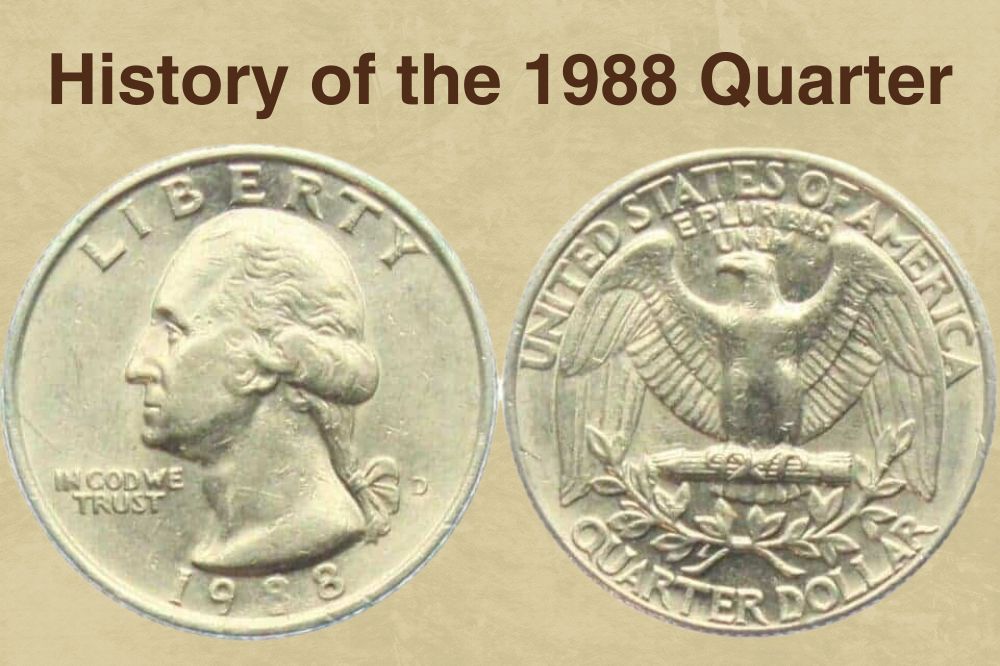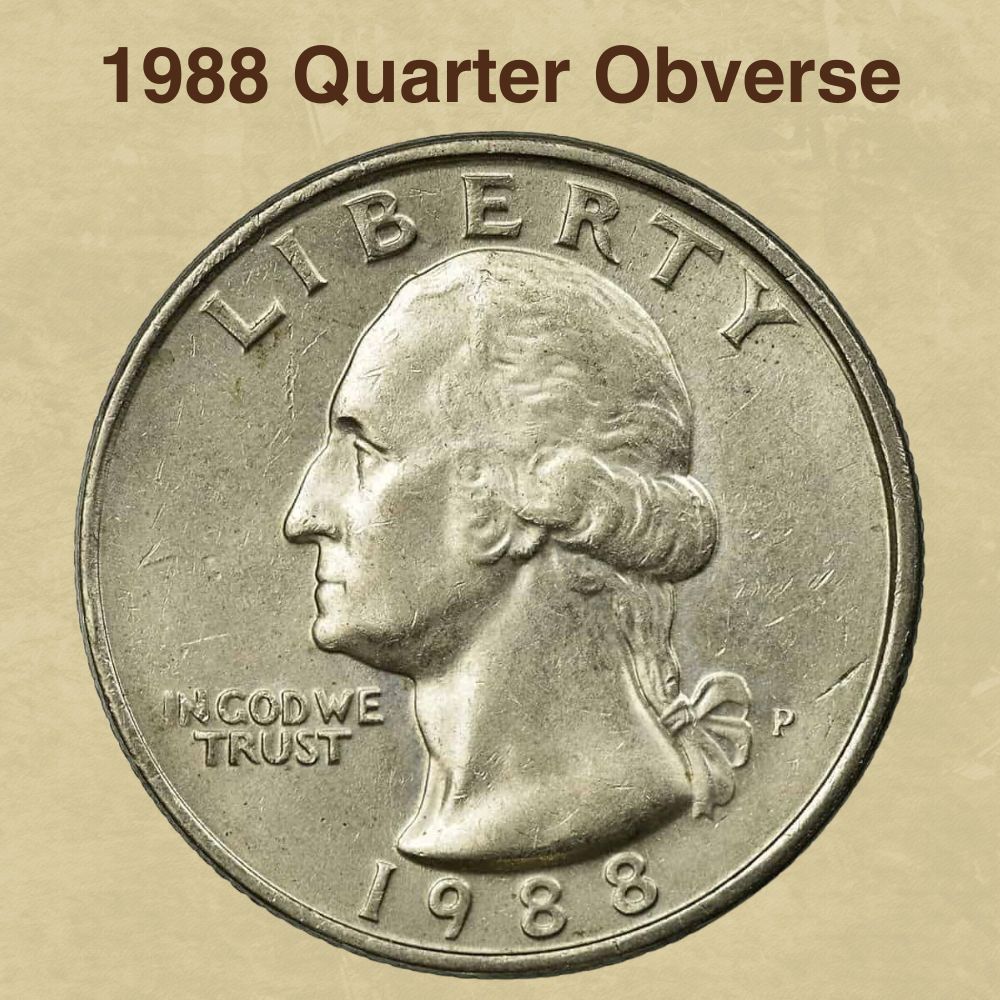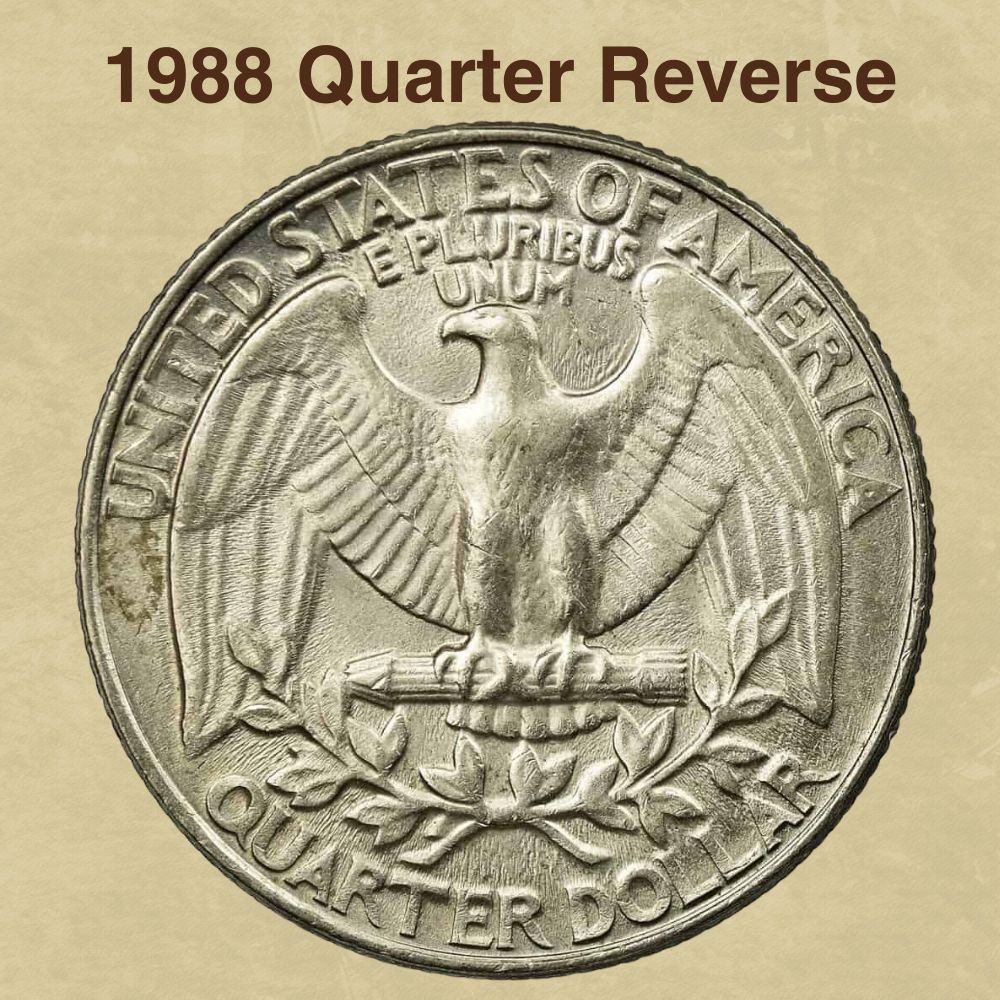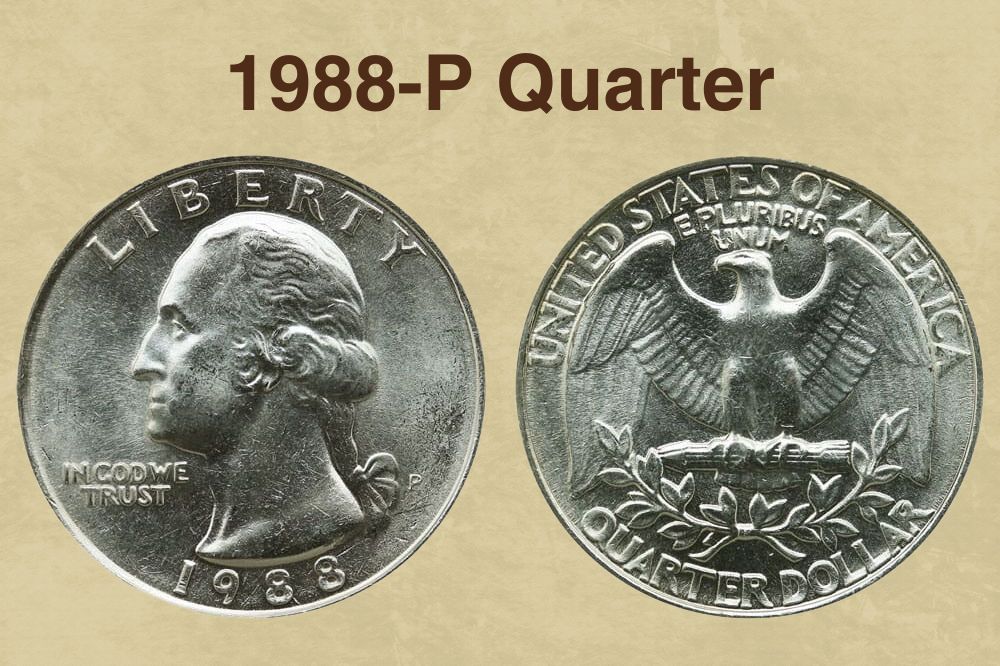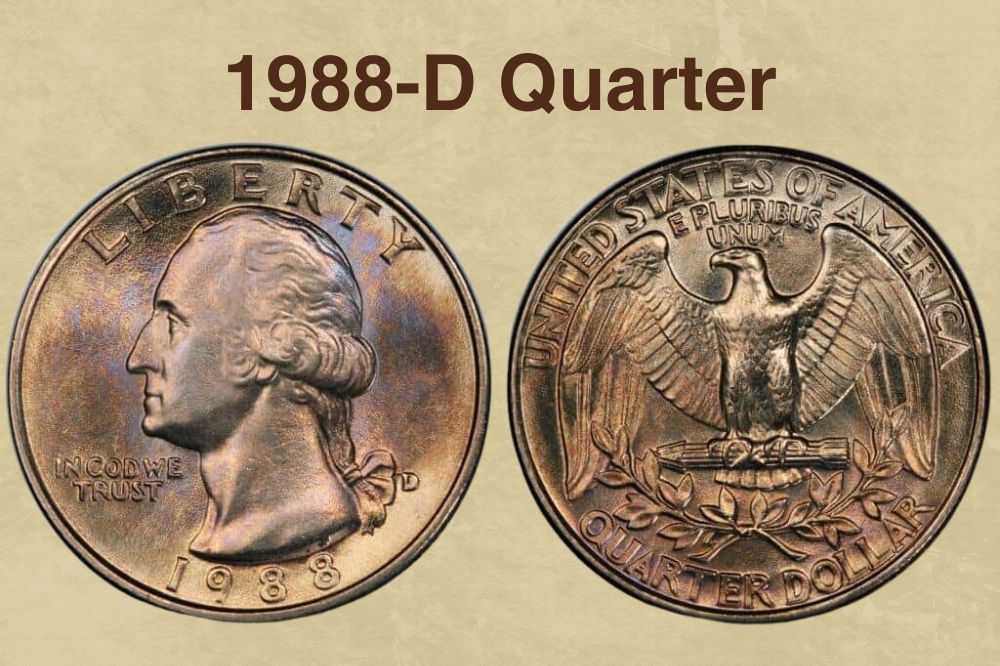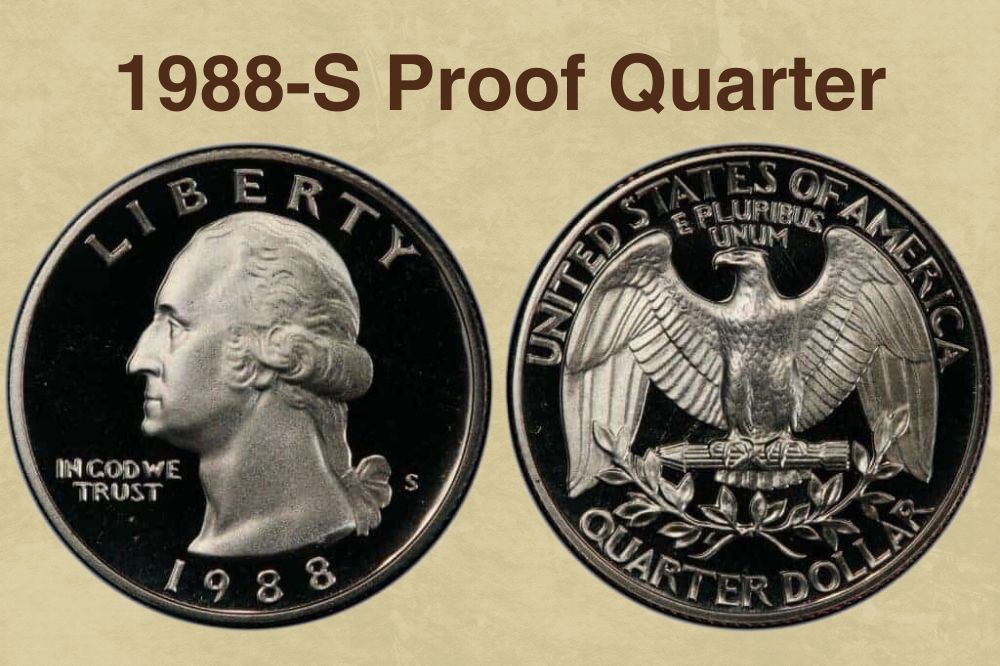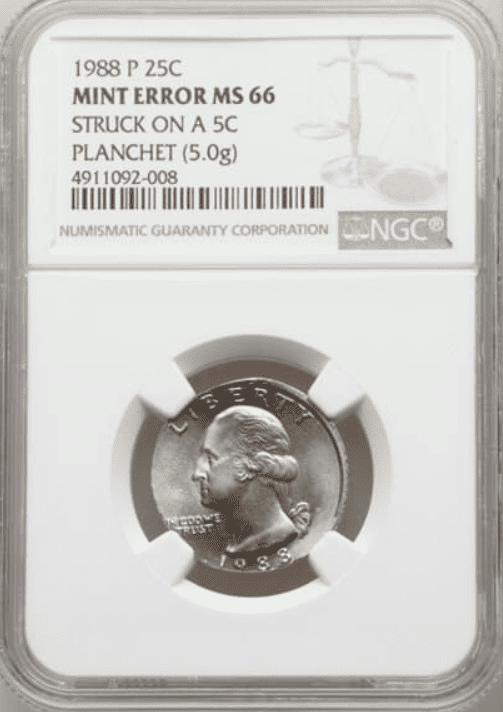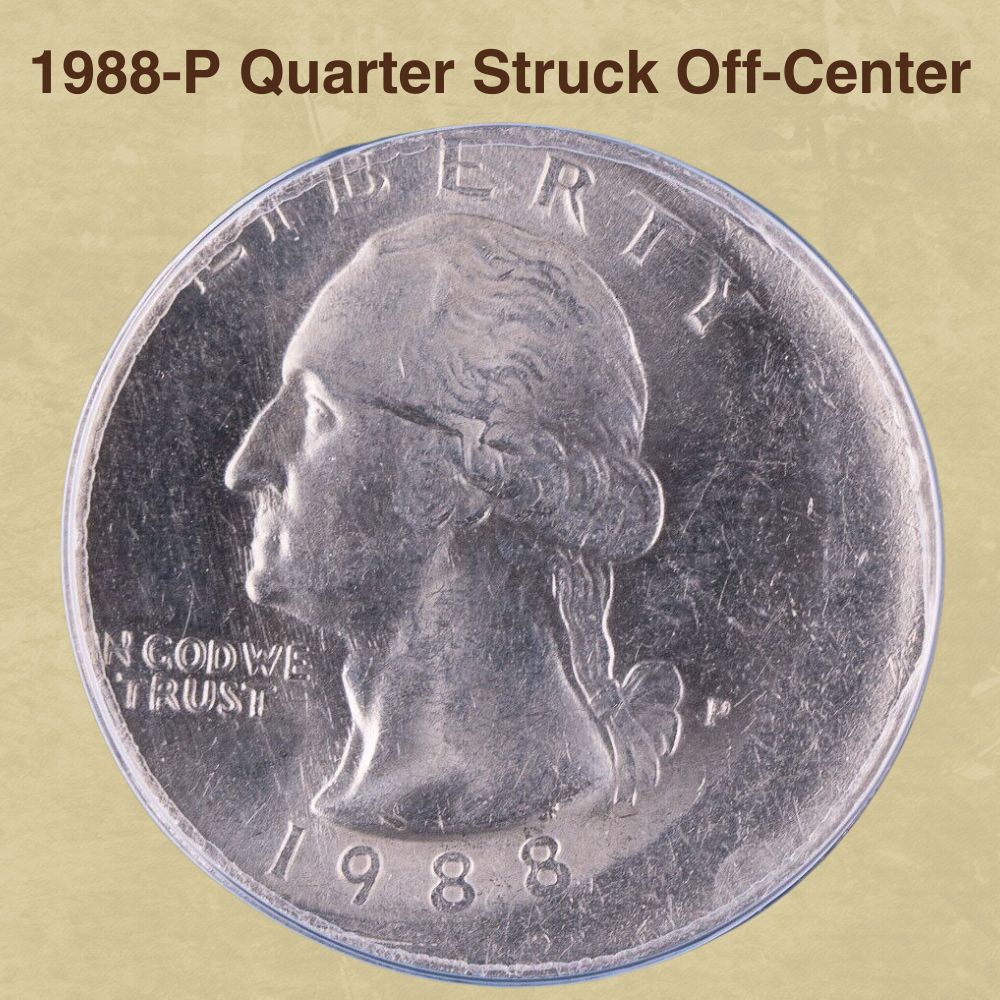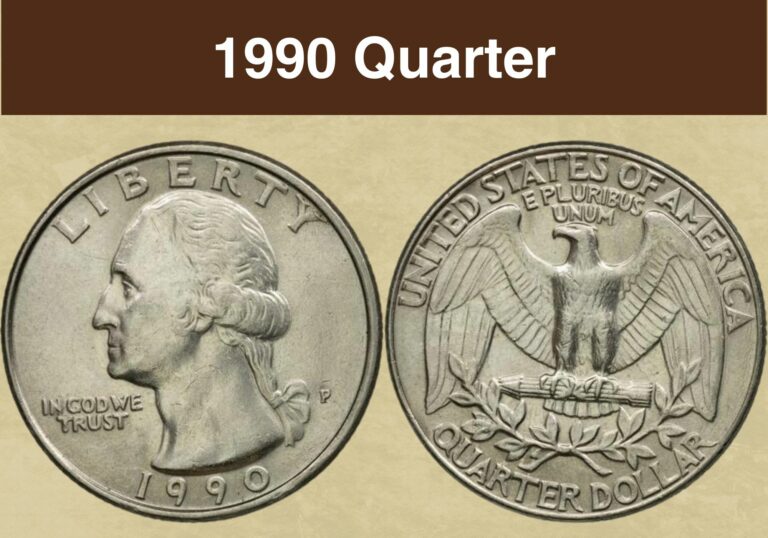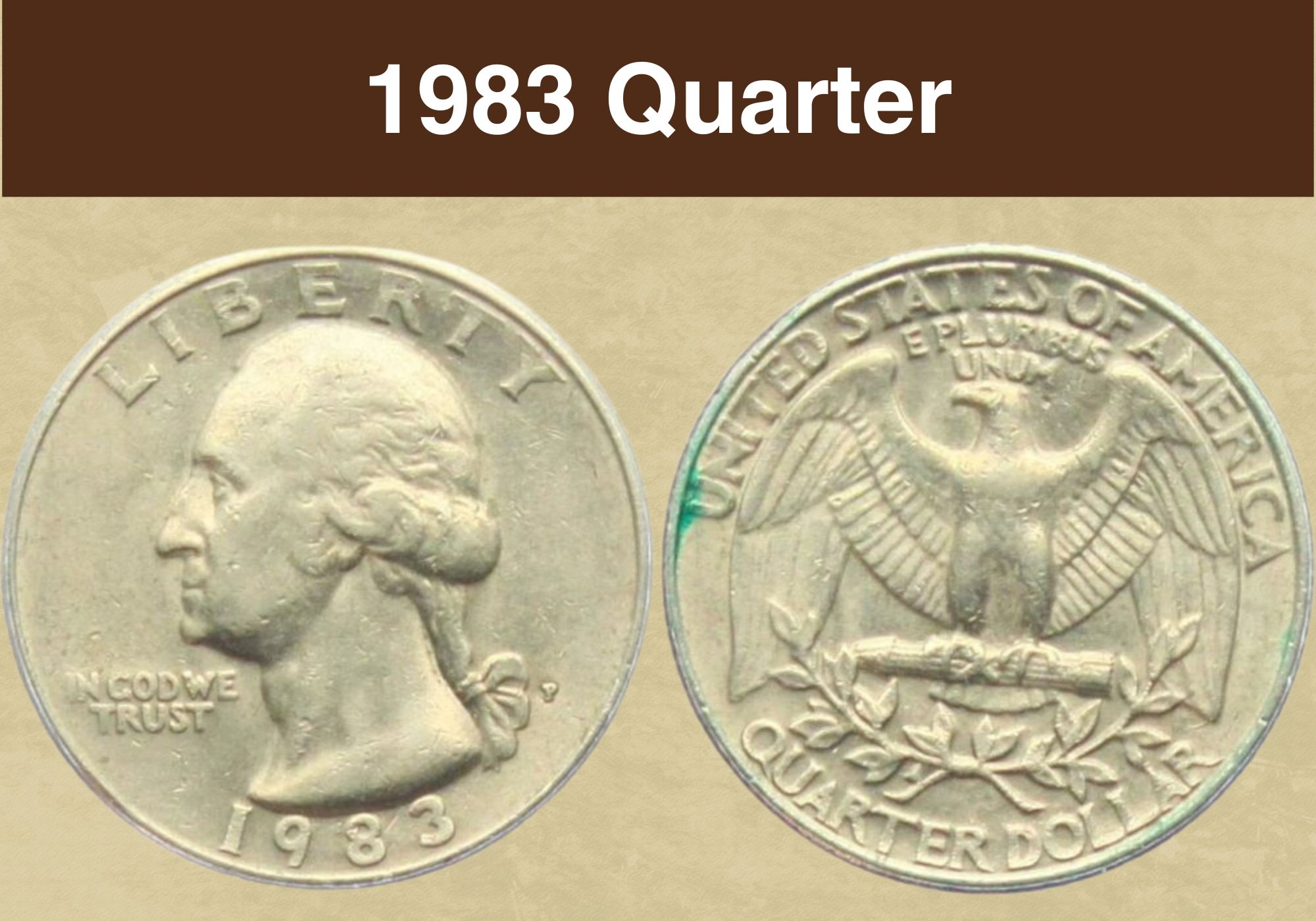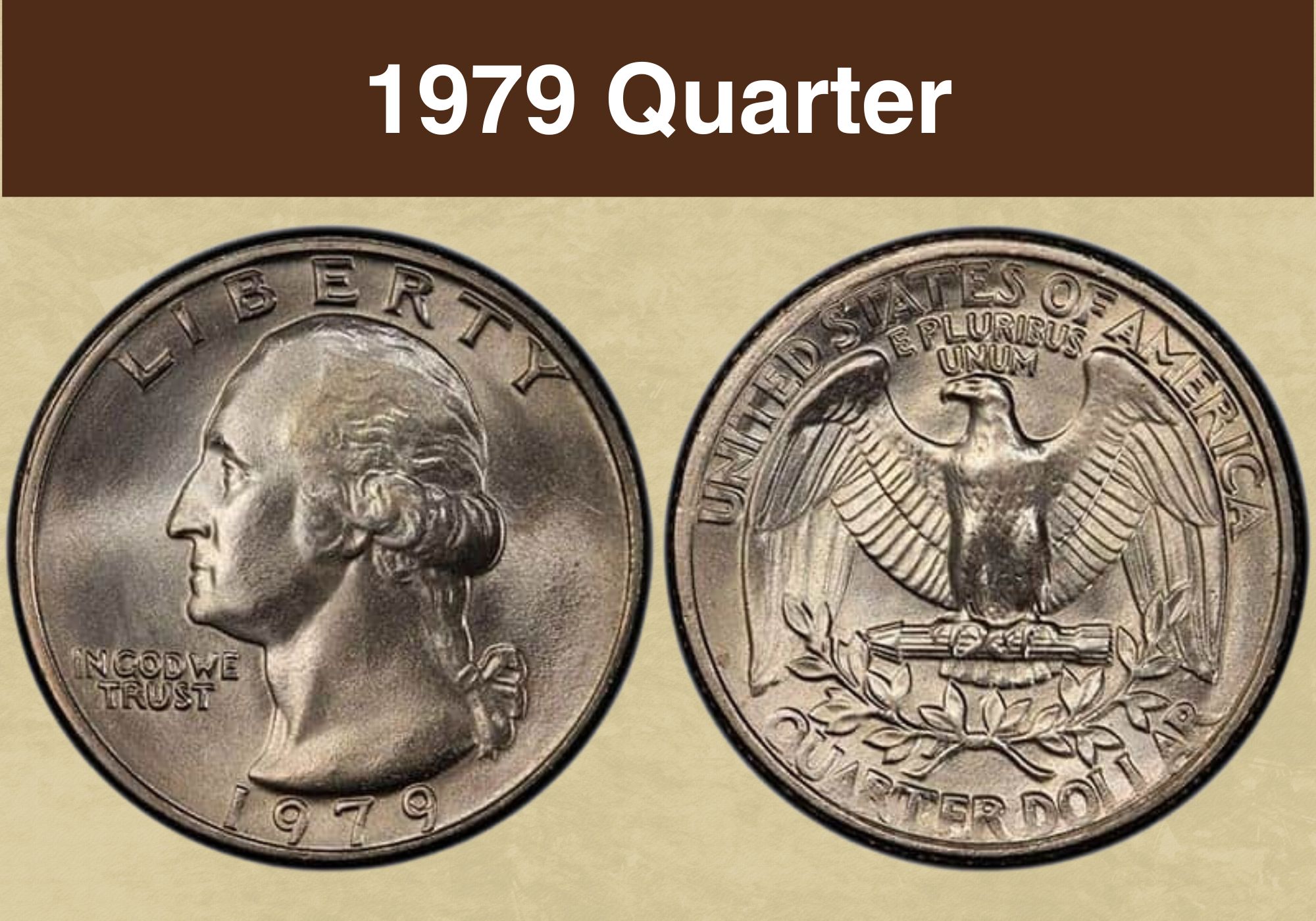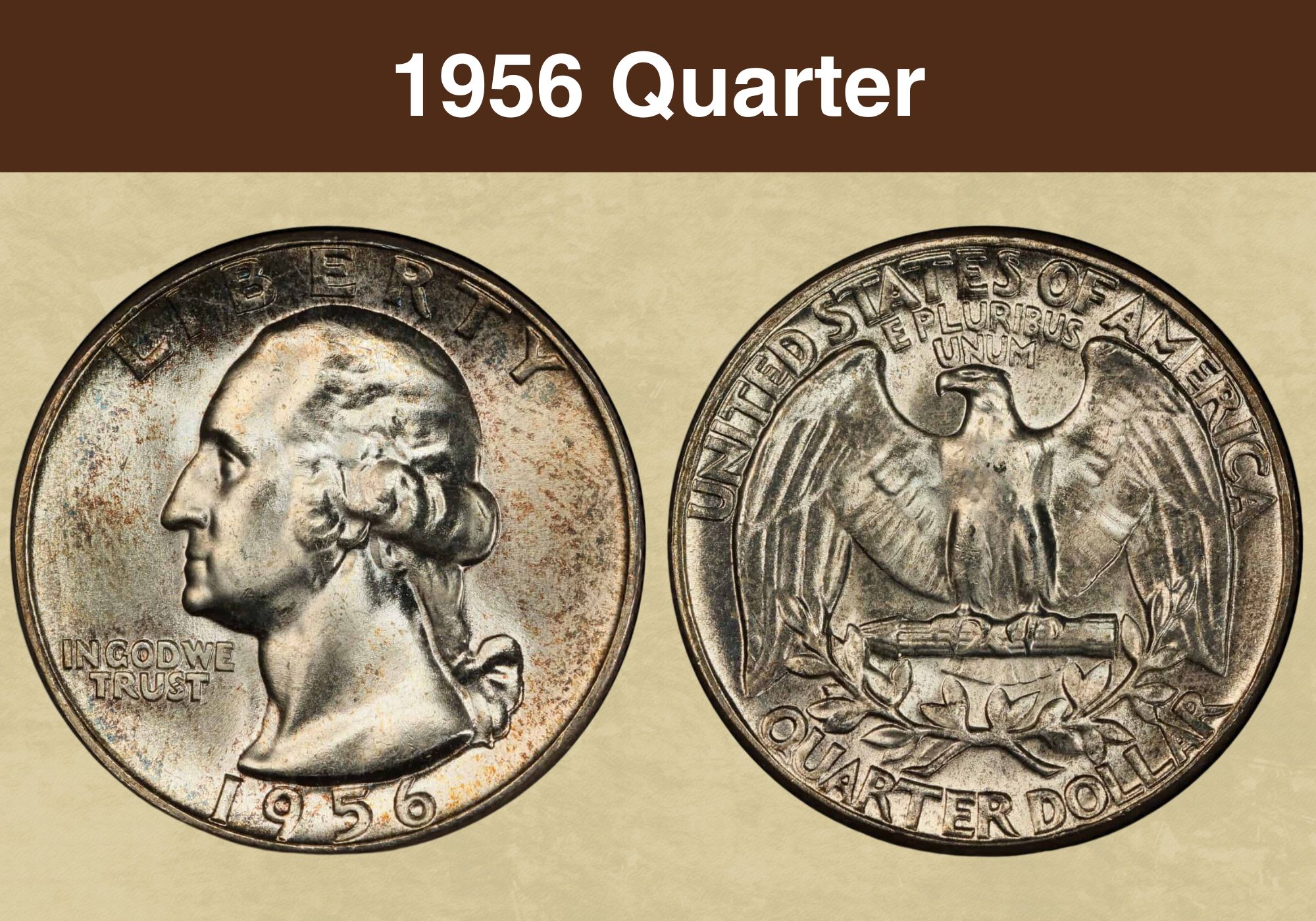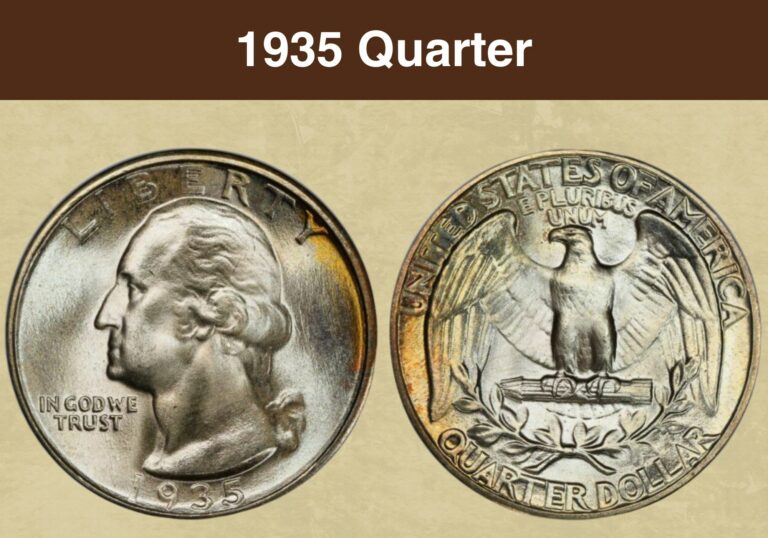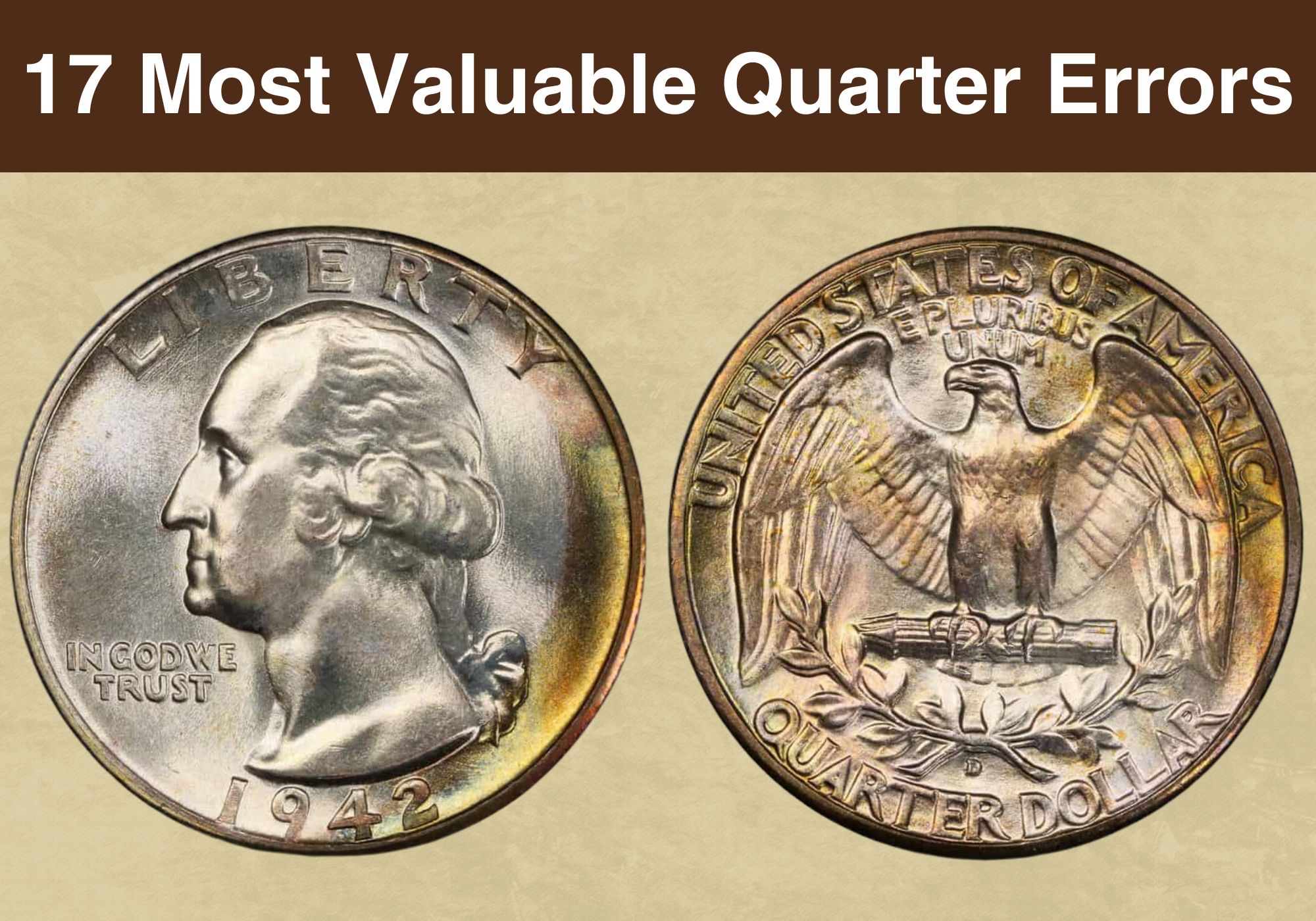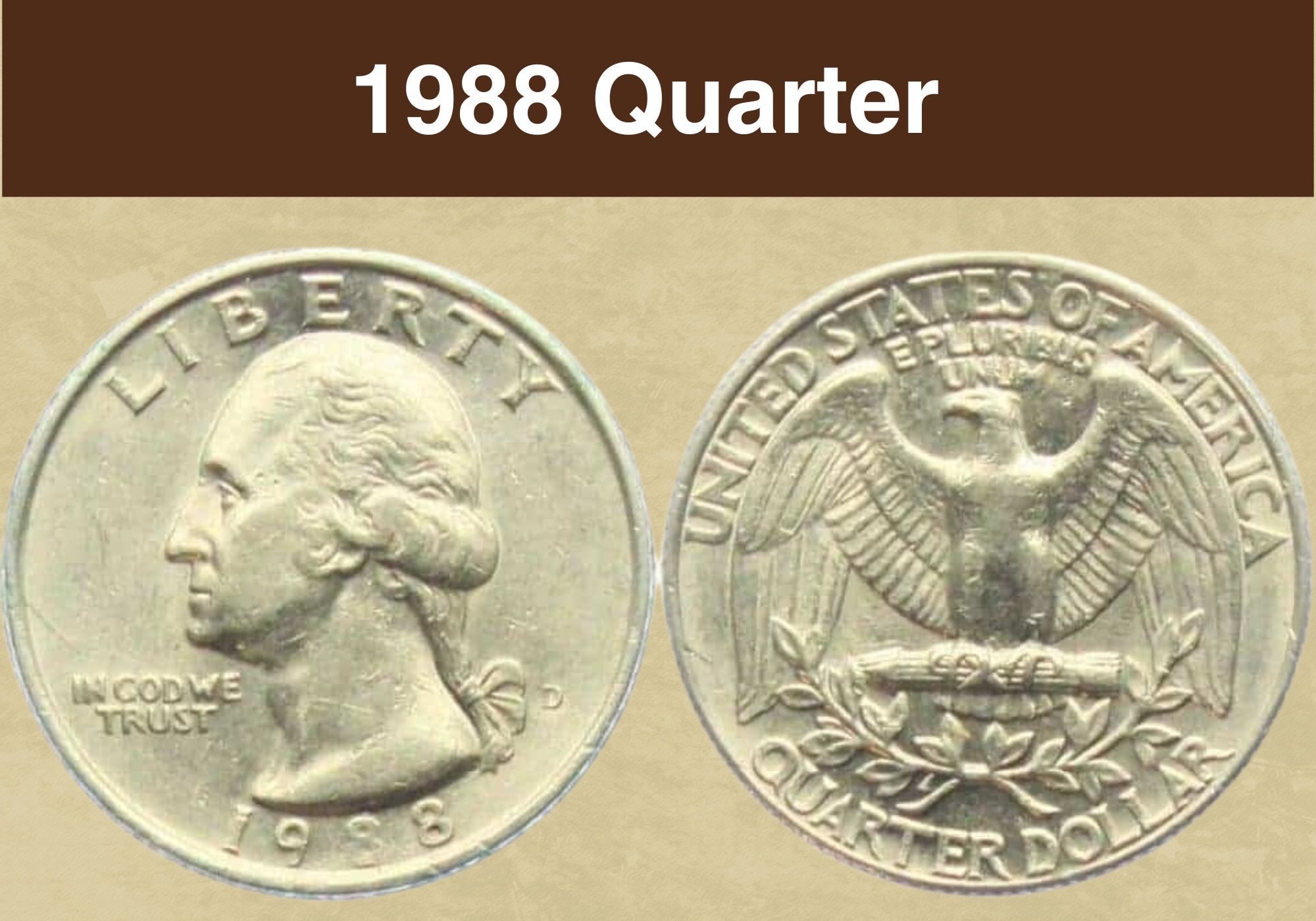
Coin Value Contents Table
Some interesting things happened in 1988, including the birth of Dell Computers, the Nick Jr. side of Nickelodeon, the first night-time baseball game at Wrigley, and Morris – the first internet-based computer worm. But for our purposes, let’s focus on the 1988 Quarter Value.
1988 Quarter Value Chart |
||||||
| Coin | MS 63+ | MS 65 | MS 66+ | MS 67 | MS 67+ | PR/PF 70 DCAM |
| 1988-P Quarter | $2 | $16 | $250 | $2,500 | – | – |
| 1988-D Quarter | $2 | $15 | $150 | $850 | $4,250 | – |
| 1988-S Proof Quarter | – | – | – | – | – | $36 |
History of the 1988 Quarter
Around the world, many people refer to the fraction ¼ as a quarter. So when they’re telling time, they may say a quarter-past one instead of 1.15. Or a quarter to 4 instead of 3.45. But when most Americans see ¼, we call it one-fourth. So how did we end up with a Quarter as our most popular coin? First, remember that its face value is a Quarter Dollar or 25 cents.
The word itself – Quarter – comes from colonial times when a lot of our language was based on Great Britain. And yes, they still say Quarter instead of Fourth. Furthermore, before we started minting American money, we used foreign coins from the UK, France, Spain, and other parts of Europe. The most popular circulating coin was the Spanish Silver Dollar.
This coin – sometimes called the 8 Reale of Pieces of 8 – could be physically sliced into 8 wedges. And Two Bits or Two Pieces of 8 was a common price point in daily trade. As it turns out, Two Bits are equivalent to 25 cents, and that’s how the Quarter became so widespread. It was initially made of silver, just like the American Half Dime, Dime, Half Dollar, and $1 coin.
No More Silver Quarters
But in 1965, the Quarter and the Dime were switched to their cupronickel-clad composition. Their cores were pure copper coated with a layer of 75% copper and 25% nickel, totaling 91.67% copper and 8.33% silver. The Half Dollar adopted this metal mix in 1971. Also, from 1932, George Washington took up permanent residence on the heads side of this 25c coin.
In 1988, the Washington Quarter still had its original design, both on the front and the back. This changed in 1999 with the 50 States Quarters and was followed by several series such as the American Women Quarters, DC & Territories Quarters, or National Parks & Monuments Quarters aka America the Beautiful. There was also an alternate design for the Bicentennial.
As we mentioned above, the tails side of the Washington Quarter has changed multiple times over the years. But the heads side was only adjusted three times. And ironically, the third one should have come first, since Laura Gardin Fraser’s portrait won the original coin contest in 1931. For unclear reasons, it wasn’t used in 1932. But it was finally implemented in 2022.
Also read: Top 13 Most Valuable State Quarters Worth Money
Features of the 1988 Quarter
Whether you’re a numismatist (a person who studies coins) or a trader, you may come across a few technical terms. These include obverse, reverse, and edge i.e. heads, tails, and thin side of a coin. The raised border is the rim or collar, the words are legends or mottos, the image is the device, and the background is the field. Planchets are blank discs that later become coins.
The Obverse of the 1988 Quarter
It shows George Washington facing left, with the motto In God We Trust under his chin. The legend Liberty floats above his head, the mint mark is on the right, next to his ponytail, and the mint date is below him. His neckline cut-off has JF for the coin designer, John Flanagan.
The Reverse of the 1988 Quarter
It shows a bald eagle with 13 arrows in its talons. The bird’s wings are spread and an olive wreath runs between their tips. The top of the coin says United States of America with E Pluribus Unum directly below. The bottom of the coin has the denomination, Quarter Dollar.
Other Features of the 1988 Quarter
The 1988 Quarter was 91.67% copper and 8.33% nickel. This comprised a pure copper core coated with 75% copper and 25% nickel aka the Johnson Sandwich after President Lyndon Johnson. The coin was 24.3mm in diameter, weighed 5.67g, and had 119 reeds on its edge.
1988 Quarter Grading
Washington Quarters have flat, even surfaces with low relief and minimal high points. This allows them to retain their condition longer. Also, 1988 was just three decades ago, so it’s easy to find 1988 Quarters in mint state. Coins are graded on the Sheldon Scale from 1 to 70, but if lots of coins exist in the top tiers, the prices drop because the coins are no longer rare.
| # | Grade |
|---|---|
| 1 | Basal State-1 |
| 2 | Fair |
| 3 | Very Fair |
| 4, 5, 6 | Good |
| 7, 8, 10 | Very Good |
| 12, 15 | Fine |
| 20, 30 | Very Fine |
| 40 | Extremely Fine |
| 50 | About Uncirculated |
| 60 | Mint State |
| 65 | Mint State |
| 70 | Mint State |
Please check our grading guides to know your coin scale, It’s the necessary step to know the exact value of your coin.
Check out now: How to Grade Washington Quarter?
1988 Quarter Value Guides
The 1988 Quarter was minted in Philadelphia, Denver, and San Francisco. By this time, proof coins used computerized lasers, meaning the field-device contrast stayed constant and all proofs were graded Deep Cameo (by PCGS) or Ultra Cameo (by NGC). On earlier acid-pickled dies, only the first 50 to 100 coins were DCAM before that textured finish faded.
1988-P Quarter Value
In 1988, the Philadelphia Mint made 562,052,000 Quarters with the P Mint Mark. eBay sales aren’t the most reliable because they can be finicky. But the record for an MS 67 was an eBay sale from 25th November 2021 when a Quarter sold for $750. It was probably based on recorded price history that ranged from $646 in January 2017 to $432 in December 2020.
But PCGS has only seen four MS 67s so far and estimates their August 2023 value as $2,500. But while PCGS also has four MS 66+ coins, they’re valued ten times lower at $250. And with over a hundred coins graded MS 66, those are evaluated at just $70 in August 2023. The prices plummet from there, with an MS 65+ at $25, an MS 65 at $16, and an MS 64+ at $6.
1988-D Quarter Value
The Denver Mint made 596,810,688 Quarters in 1988. They all had the D Mint Mark. On 4th January 2017, an MS 67 sold for $1,645. But PCGS has received 15 coins in that grade so the value of these coins has dropped by half to $850 in August 2023. That said, PCGS has also seen a couple of submissions in MS 67+ so it has evaluated them at $4,250 in August 2023.
Sometimes, neighboring grades can affect pricing as well. A dozen MS 66+ Quarters have shown up so they’re appraised at $150. That seems drastic given the price of MS 67. Instead of being pulled half a step up, these coins are pulled down by the MS 66 Quarters that go for $65. These suffer from their volumes because over 200 samples have been submitted so far.
1988-S Proof Quarter Value
Proof coins are made to provide idealized samples for the archives. They’re also sold to collectors. They come in three styles – mirror-like proofs, reverse proofs, and matte proofs aka satin-finish. The latter are sandblasted to produce a grainy finish while the former two have frosted sections and reflective sections. The hazy parts are acid-washed or laser-treated.
Conversely, the shiny bits are burnished with horsehair brushes or stainless steel balls. The die gets pickled, lasered, or scrubbed while the planchet is tumbled by the 6mm beads. These procedures ensure that proof coins are distinct from business strike or regular strike coins that are intended for everyday use. The San Francisco Mint made 3,262,948 Proofs in 1988.
As we mentioned before, all the known proof coins are DCAM thanks to the laser technology that was introduced in the 1970s. But the rise in quality reduced prices since so many coins exist in good grades. A PR 70 DCAM was $403 on 31st December 2007, a disappointing end to the year. PCGS has over 1,000 coins in PR 70 DCAM, so they’re only worth $36 in 2023.
Also read: Top 16 Most Valuable Modern Quarters Worth Money
Rare 1988 Quarter Errors List
At the US Mint, the equipment produces hundreds of coins per minute. This inevitably leads to mint mistakes that can raise the value of any coin. They include things like misalignment, wrong planchets, double denominations, and cud breaks. These days, die flaws are rare since coins are now digitally struck, but let’s explore the prices of common 1988 Quarter Errors.
1988-P Quarter Broadstruck Error
Coins need collars to maintain their shape and consistency. Rims also facilitate stacking. They used to be made with a 3-piece mold, but these days, the upsetting machine raises the rim. But if the coin is flawed, the collar ends up flatter and wider. This is called a broadstrike or broadstruck error. Graded MS 63 by ANACS, this 1988-P Quarter only sold for about $15.
1988-P Quarter Partial Collar Error
The coin above had its collar deformed towards the east and west of the coin. But sometimes, only one side of the retaining collar gets damaged. This happens more often if the rim used a detachable mold and one of its three pieces came off too soon. Either way, this is known as a partial collar error, and in MS 63 as graded by ANACS, this 1988-P Quarter was about $18.
1988-P Quarter Struck on a Nickel Planchet
Today, most US coins are cupronickel. But they have different diameters and designs, so a coin might be struck on a planchet intended for another denomination. Here, the 25c was struck on a 5c blank which means some of the details got sliced off since nickels are 21.21mm vs. quarters which are 24.3mm. It was also lighter at 5g. In MS 66, the coin sold for $850.
1988 Quarter Struck on a Dime Planchet
This error is in the same category as the one above. But this time, it’s a 10c (dime) planchet, which is even smaller at 17.91mm. As a result, the mint-marked section of the coin got sliced off the obverse and some legends are missing on both sides. Even without the obvious visual confirmation, the weight would have given it away. Graded MS 62, this coin sold for $480.
1988-D Quarter Struck 10% Off-Center
Since both dies hit the planchet simultaneously, it needs to sit dead center for accurate striking. If it’s slightly off-kilter, you may get a misalignment that leaves part of the coin’s surface unmarked. In this case, it was the 10% towards the right edge of the coin that stayed empty. In the medium grade of AU 55 by ANACS, this 1988-D Quarter sold for about $50.
1988-P Quarter Struck Off-Center
This coin has the same type of error as above. But it’s a Philadelphia coin rather than a Denver one, which affects its value. Also, the misalignment is larger and involves empty spaces on the lower obverse and upper reverse of the coin. This slices off the top of the eagle, Washington’s head, and the upper legends. Graded MS 63 by ANACS, it sold for around $69.
1988-D Quarter Missing Clad Layer
We already explained that the innards of all quarters made after 1965 were pure copper. The outsides were coated in a mix of copper and nickel to mimic the original silver appearance of these coins. But sometimes, the clad layer doesn’t congeal properly and slips off during the minting process. Here, the obverse cladding is missing, and in MS 62, the coin sold for $155.
1988-P Quarter Die Break Error
Coin dies make thousands of coins before they’re retired. Towards the end of their viability, they develop chips and gashes called cuds. These are transferred onto the coins and appear as lines, cracks, design errors, scooped-out metal, or smudges on the coin surface. Even in low grades, you can sell cud errors on eBay and make some money. This one went for $50.
Also read: 17 Most Valuable Quarter Errors Worth Money
Where to Sell Your 1988 Quarter ?
Now that you know the value of your coins, do you know where to sell those coins online easily? Don’t worry, I’ve compiled a list of these sites, including their introduction, pros, and cons.
Check out now: Best Places To Sell Coins Online (Pros & Cons)
1988 Quarter FAQ
Is There a 1988 Silver Quarter?
No, the 1988 Quarter is a cupronickel-clad coin. In terms of circulating coins, the last Silver Quarter was struck in 1964 with special bicentennial editions in 1976. They resumed making Silver Proof Quarters in 1992 and they’re still produced today, though not in business strikes.

